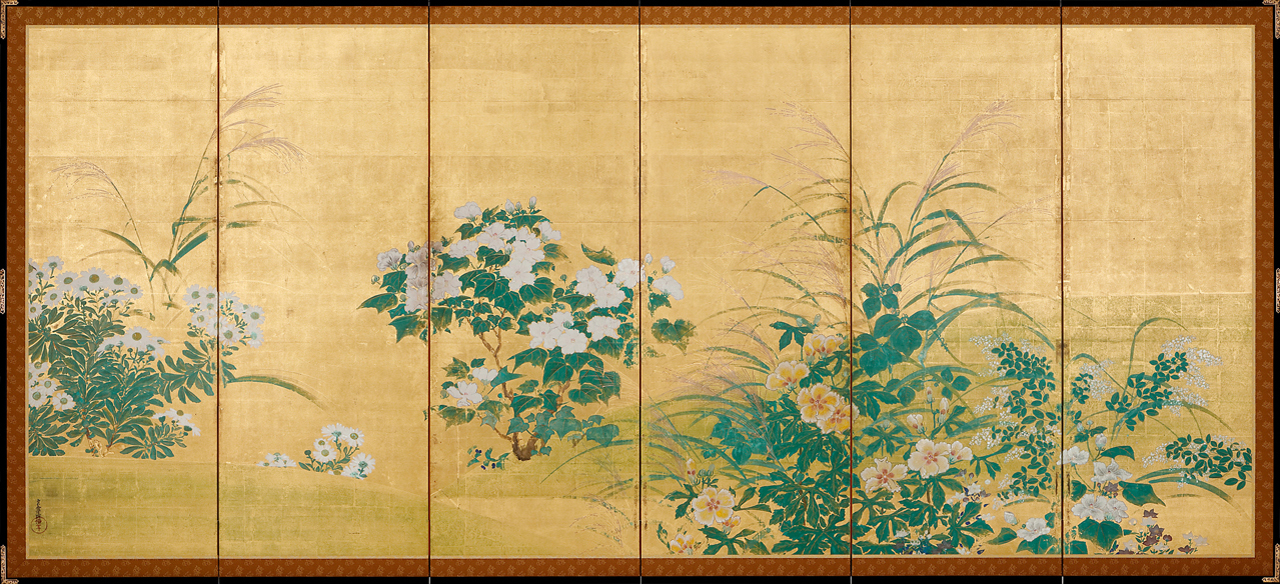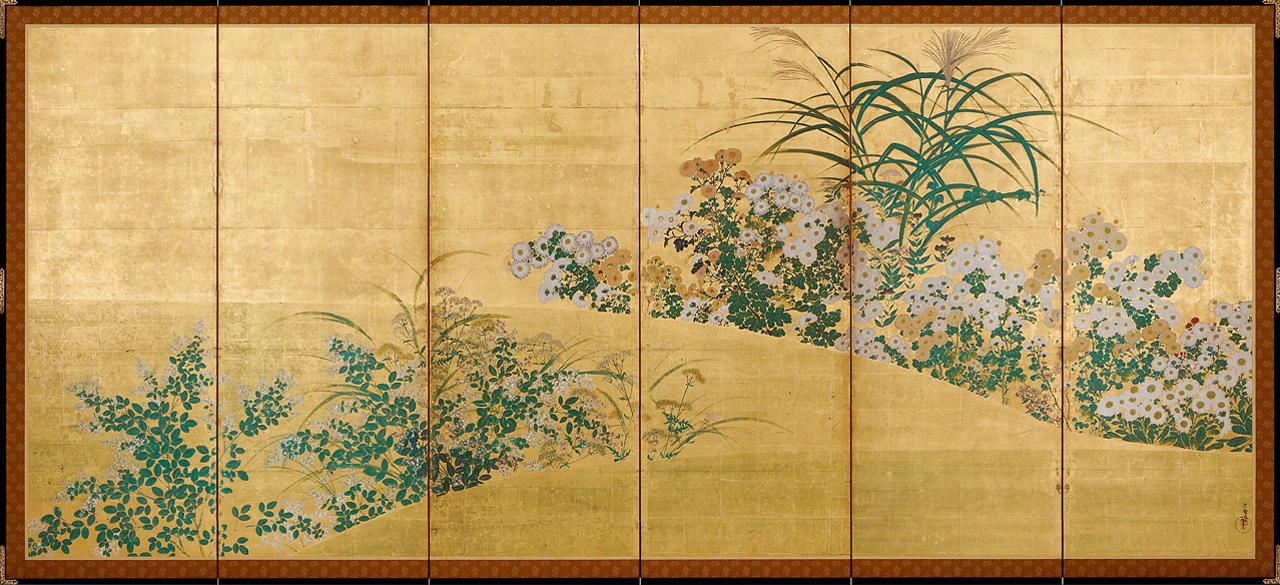Autumn Grasses
DATA
- Artist:
- Tawaraya Sosetsu
- Historical era:
- Edo (17th century)
- Material:
- printed, gold on washi paper
- Medium:
- pair of six-fold screens
- Theme:
- High Resolution Facsimile of Historical Cultural Assets
- Size:
- Each Screen H158.5 × W362.6 cm
- Recipient:
- National Institutes for Cultural HeritageMAP
[Original]
- Current owner:
- Tokyo National Museum
- Material:
- ink, color, and gold on washi paper
DESCRIPTION
Tawaraya Sosetsu (dates unknown), a painter of the early Edo Period, is believed to have been the successor of Tawaraya Sotatsu, founder of the Rimpa school of painting, since he inherited the “Inen” seal used by Sotatsu and his studio. He began his career in Kyoto and then moved to Kanazawa to become official painter of the Maeda clan, the rulers of Kaga domain.
This pair of folding screens, which eventually came into the possession of the Takamado family, a branch of the imperial family, is one of Sosetsu’s best-known works. It depicts chrysanthemums, bush clover, yellow patrinia, pampas grass, and Confederate roses in full bloom in the autumn fields, represented by the background of gold leaf overlaid with a thin wash of malachite green. The work bears the signature-seal “Sosetsu Hokkyo,” “Hokkyo” being an honorific title for artists and others. Since Sosetsu was granted that title around 1642, it must date from after then.


